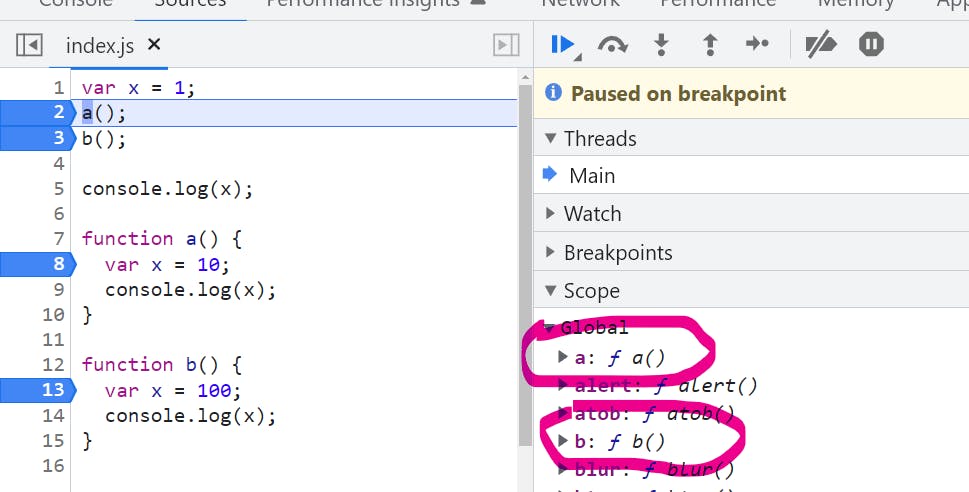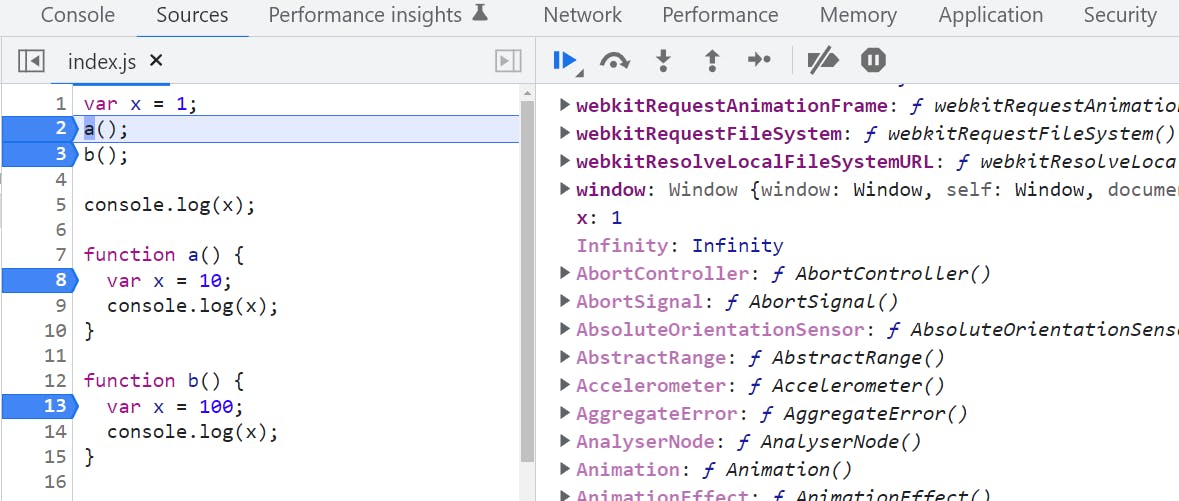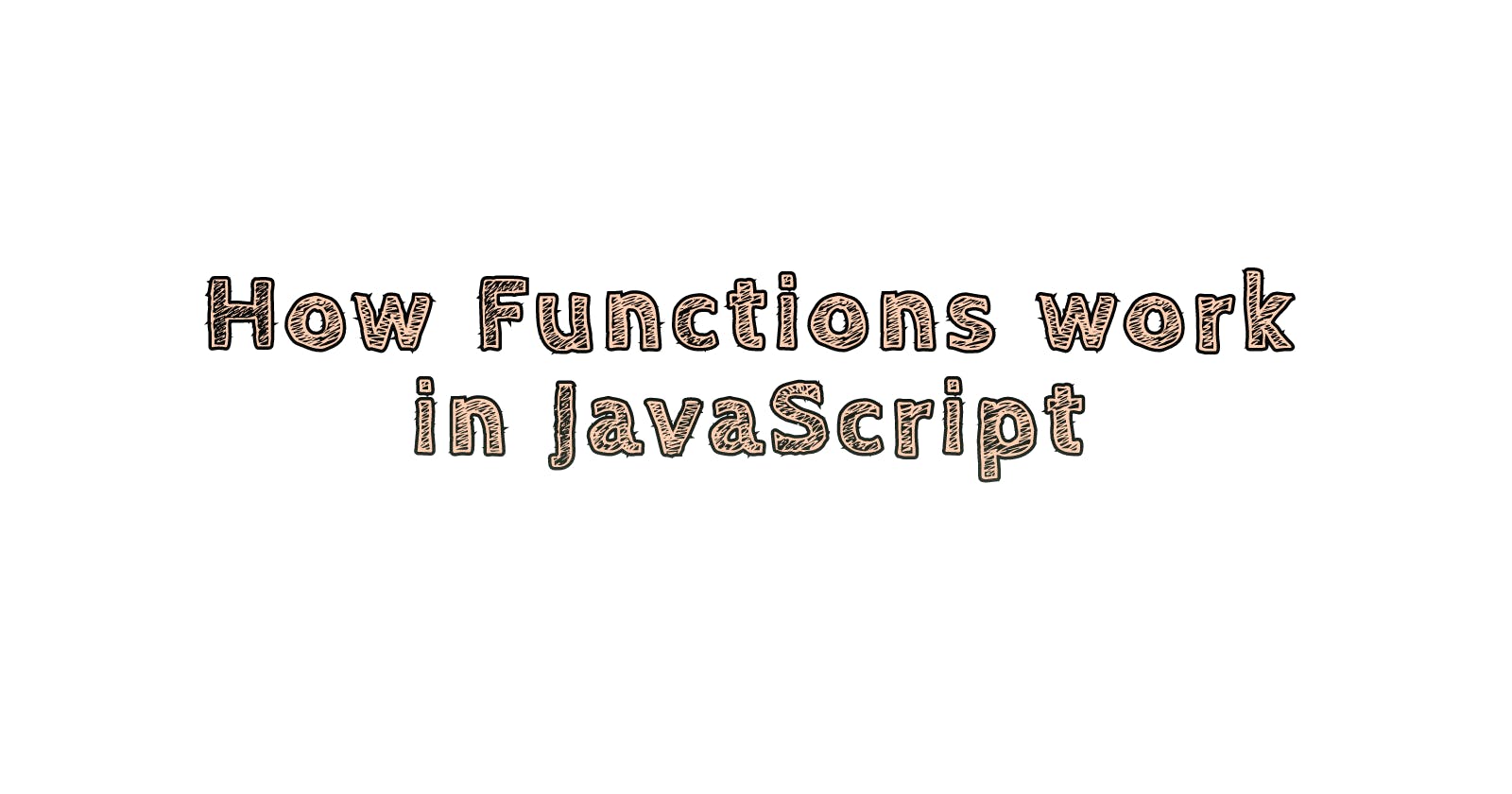Function Execution in JavaScript
How are the function executed in JavaScript
Table of contents
No headings in the article.
To see how are these functions executed in JavaScript let's take the reference of the following example.
1. var x = 1;
2. a();
3. b();
4.
5. console.log(x);
6.
7. function a() {
8. var x = 10;
9. console.log(x);
10.}
11.
12. function b() {
13. var x = 100;
14. console.log(x);
15. }
Here when the code is executed line by line, in this scenario the very 1st thing that happens is the Global Execution context (GEC) is created and then this GEC is then stored in the Call Stack.
In this GEC there are 2 Components
Memory Component(Variable Environment)
Code Component (Thread of Execution).
Whereas this takes place in 2 phases
Memory allocation Phase
Code Execution Phase
So, In this 1st phase here the variables and functions code is allocated memory when it's in the memory allocation phase.
Note: Here function code points to the block of code where the actual block of code is been stored in it.
So, considering the above example x will have a value as undefined and function a() & b() will point towards its block of code.
However, this is the 1st phase we are talking about is when the code component i.e. the thread of execution the var x gets its value i.e. 1 and execution control gets transferred to the next line where the a() is been invoked.
When the function a() is been invoked in this a mini-execution context is created for the same where again the same process takes place in 2 phases
Memory Allocation phase
Code Execution phase
And during the memory allocation phase, the local variables and functions are been reserved space for in this case, those are x and their value shall be undefined.
In 2nd phase, the value of x will then be updated to 10 and control goes to the next line and logs the value of x i.e 10 to console from the local memory space which is created by the mini-execution context.

While this mini-execution context is created for function a(). it is stored in the call stack until the value of x i.e. 10 is logged in the console.
Also, once this is done the mini-execution context created for a() is been destroyed and is been popped out from the call stack.
And now the control is been transferred to line number 3 i.e. b() and here again the mini-execution context is been created for b() and the same is been pushed in the call stack.
Please refer to the below use case for the same.

Initially the x will have a value as undefined and in 2nd phase will be updated with 100.
Once the value of x i.e 100 is been logged to console this mini execution context for a function b() is destroyed and control goes back to the line number 3.
Finally the value of x i.e. 1 is been initialized and then logged to the console and the Global execution context is too destroyed and the complete code is executed.
Reference for Developers tool


